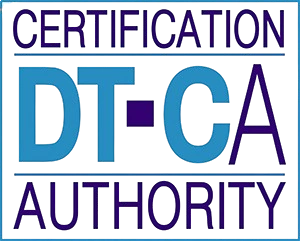Infrastructure Penetration Testing
Professional infrastructure pentesting is essential to ensure the resilience of corporate IT networks, servers, and cloud architectures against constantly evolving cyber threats.
We provide comprehensive assessments of external and internal networks, Active Directory, Wi-Fi, and Kubernetes clusters. Our ethical hackers simulate real-world attack scenarios using a combination of manual testing and advanced automated tools.
Every engagement concludes with a detailed technical report including findings, risk ratings, and practical remediation guidance. The goal is to strengthen your security architecture and preparedness for real attacks.

Types of penetration tests
External Tests
External infrastructure pentesting reveals vulnerabilities in internet-facing services such as VPNs, firewalls, web servers, DNS, and cloud interfaces. We identify attack vectors that could be exploited from the internet.
Internal Tests
We simulate an attacker who has gained internal access (e.g., via a compromised laptop). We test for lateral movement opportunities, weak segmentation, low visibility, and unsecured systems.
Active Directory
We analyze configurations and identify issues in password management, privilege delegation, GPO policies, and privileged accounts. AD is frequently targeted by advanced attacks.
Kubernetes & Wi-Fi
We test access policies, network separation, runtime security, and secret management. Wi-Fi testing covers encryption, spoofing, and man-in-the-middle attacks.
What does the testing process look like?
Professional infrastructure penetration testing follows well-defined phases to ensure a systematic and consistent approach with maximum risk discovery. Each stage is critical to overall success and provides valuable input for security decision-making:
- 1. Initial consultation: We capture your goals, security requirements, and scope. We define rules of engagement (e.g., Black Box, Grey Box).
- 2. Passive & active reconnaissance: Using OSINT, DNS enumeration, and system fingerprinting to understand the target with minimal disruption.
- 3. Infrastructure mapping: Identifying networks, devices, systems, and interconnections across internal and/or external environments.
- 4. Vulnerability identification: Port scanning, software version auditing, configuration reviews, and detection of known issues (e.g., CVEs, misconfigurations).
- 5. Exploitation tests: Attempting to exploit vulnerabilities to validate real-world impact and exploitability.
- 6. Post-exploitation: Where appropriate, simulating lateral movement, privilege escalation, and data exfiltration to assess business impact.
- 7. Reporting: A detailed technical and executive report with findings, CVSS-based risk ratings, recommendations, and best practices.
- 8. Consultation & support: A follow-up session to discuss mitigation options and implementation steps.
HAXORIS infrastructure pentesting provides not only technical insights but also a strategic view of your overall cyber-resilience.
Why Choose HAXORIS?
Experience
Our experts have extensive experience in offensive security, red teaming, and application penetration testing.
Transparency
Each step is clear and transparent so you know what to expect. We maintain ongoing communication for the best results.
Collaboration
We work closely with your team, providing all necessary information and deliverables throughout the project.
Professionalism
Our work is conducted to the highest professional standards while adhering to ethical and security principles.
THEY TRUST US











FAQ
The duration depends on the environment’s size and complexity. A small web application may take 3–5 days, while a full network assessment can take 1–3 weeks. During kickoff, we provide a transparent time and effort estimate.
Pricing depends on scope, size, and complexity. A basic web-app test may start in the hundreds of euros, while larger networks or cloud environments cost more. After a consultation, we’ll prepare a no-obligation quote.
Ideally at least once a year. You should also test after major changes - launching a new application, migrating to the cloud, or upgrading infrastructure. Regular testing helps maintain security and compliance.
You’ll receive a comprehensive report including an executive summary, technical findings, risk ratings, impact analysis, and concrete remediation recommendations. We also offer a review session to explain results and answer questions.